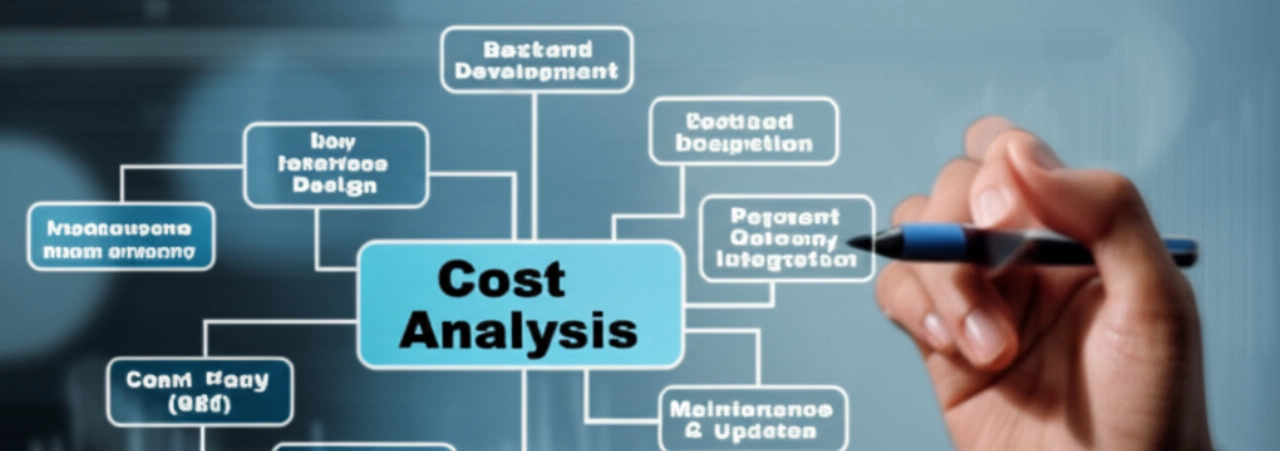Is your next ecommerce redesign just another line item on a budget, or is it the strategic lever your enterprise needs to pull? For many B2B and enterprise leaders, the phrase 'ecommerce redesign cost' conjures images of spiraling expenses, project delays, and the terrifying prospect of a failed migration. You’re not just looking for a new website; you’re seeking a fundamental transformation of your digital commerce operations – one that promises scalability, seamless integration, and a clear path to sustained profitability. This isn't about a superficial facelift; it's about engineering a robust, future-proof digital engine. This article will deconstruct the true nature of ecommerce redesign cost, revealing how a strategic investment can unlock unparalleled growth and competitive advantage, transforming your digital platform from a liability into your most powerful asset.

Beyond the Price Tag: Why Your Ecommerce Redesign is a Strategic Imperative
A true enterprise ecommerce redesign isn't an expense; it's a calculated investment in your company's future. The real cost isn't the upfront expenditure, but the Total Cost of Ownership (TCO) of a platform that consistently underperforms, limits growth, and drains resources. Imagine a digital commerce engine that scales effortlessly with your market demands, integrates seamlessly with your existing ERP integration, PIM integration, and CRM systems, and provides the agility to adapt to evolving customer expectations. This isn't a dream; it's the outcome of a strategically planned redesign. It's about building a competitive moat, ensuring your digital presence is not just functional, but fundamentally superior, driving higher conversion rate optimization (CRO) and market share.

The Hidden Costs of 'Saving Money': Avoiding the Ecommerce Redesign Traps
The allure of a 'cheap' ecommerce redesign is a siren song that has led many enterprises to the rocks of technical debt and operational chaos. Opting for a one-size-fits-all SaaS platform or an inexperienced vendor often results in a system that quickly hits a scalability ceiling, leaving you trapped. These platforms, while seemingly cost-effective upfront, often lack the flexibility for complex B2B pricing, custom product configurators, or intricate workflow automation. The result? Manual workarounds, data silos, and an operational nightmare that we call Integration Hell. A slow, clunky site, plagued by a performance bottleneck, directly impacts your bottom line, killing conversions and eroding customer trust. And the specter of a failed migration – lost SEO, data corruption, catastrophic downtime – is a very real fear. True savings come from investing in a robust, custom-tailored solution that anticipates future needs, not from cutting corners today.

Deconstructing the Investment: Key Factors Influencing Your Ecommerce Redesign Cost
Understanding the true ecommerce redesign cost requires looking beyond a single number. It's a sum of strategic components, each critical to building a high-ROI platform. Key factors include:
- Platform Choice: Are you opting for a highly customizable, API-first headless commerce solution built on MACH architecture principles, or a more traditional monolithic platform? Composable commerce offers unparalleled flexibility but often requires specialized expertise.
- Customization & Features: The more unique your business logic (e.g., complex pricing tiers, custom configurators, B2B specific workflows), the higher the development effort.
- Integrations: Connecting your new platform to existing ERP integration, PIM, CRM, WMS, and accounting systems is paramount. The complexity and number of these integrations significantly impact cost.
- Data Migration: Safely and accurately moving product data, customer accounts, order history, and content is a meticulous process that demands expertise to avoid the fear of a failed migration.
- Design & UX: A user-centric design tailored for B2B buyers or complex enterprise workflows is crucial for CRO and adoption.
- Ongoing Maintenance & Support: Factor in post-launch support, security updates, and future enhancements to get a complete picture of TCO.
Case Study: From Legacy Burden to Digital Powerhouse – A €75M Manufacturer's Transformation
A leading European industrial manufacturer, grappling with a legacy platform that had reached its scalability ceiling and was mired in Integration Hell, approached Commerce K. Their existing system couldn't handle their complex product configurations or global B2B pricing. The ecommerce redesign cost seemed daunting, but the cost of inaction was higher. We engineered a composable commerce solution, leveraging MACH architecture principles, integrating their SAP ERP, Salesforce CRM, and a custom PIM. The result? A 60% reduction in manual order processing, a 35% increase in online self-service orders, and a platform capable of supporting their aggressive global expansion plans. Crucially, the migration was executed with zero downtime, preserving their critical SEO rankings and ensuring business continuity. This wasn't just a redesign; it was a strategic re-platforming that transformed their digital operations into a competitive advantage.
Your Partner in Growth: How Commerce K De-Risks Your Ecommerce Redesign Investment
At Commerce K, we understand that the ecommerce redesign cost is more than just a line item; it's an investment in your enterprise's future. We don't just build websites; we engineer robust, scalable, and integrated digital commerce ecosystems. Our approach is rooted in understanding your unique business challenges – from overcoming the scalability ceiling to untangling Integration Hell and mitigating the fear of a failed migration. We specialize in composable commerce and MACH architecture, ensuring your platform is future-proof and adaptable. Our expertise in complex ERP integration, PIM integration, and API-first strategies means your new platform won't just look good; it will perform flawlessly, deliver measurable ROI, and significantly reduce your Total Cost of Ownership. We are not just a vendor; we are your strategic partner, committed to transforming your digital commerce into a powerful engine for growth.
Frequently Asked Questions about Ecommerce Redesign Cost
Here are some common questions enterprise leaders ask about their ecommerce redesign investment:
Q: What is the typical ROI for a significant ecommerce redesign?
A: While specific ROI varies, a well-executed enterprise redesign typically yields significant returns through increased conversion rates, reduced operational costs (due to automation and integration), expanded market reach, and improved customer experience. We focus on measurable outcomes and help you define key performance indicators (KPIs) upfront.
Q: How long does an enterprise ecommerce redesign project usually take?
A: Timelines vary based on complexity, custom features, and integrations. A strategic enterprise redesign can range from 6 to 18 months. Our detailed scoping process provides clear milestones and realistic timelines, ensuring transparency from day one.
Q: How do you ensure SEO continuity and minimize downtime during a redesign or migration?
A: SEO continuity is paramount. We employ rigorous SEO migration strategies, including comprehensive URL redirects, content mapping, technical SEO audits, and pre-launch testing. Our phased deployment approach and meticulous planning minimize downtime, ensuring your search rankings and traffic remain intact.
Q: Can a new platform truly solve our integration challenges with ERP, CRM, and PIM?
A: Absolutely. Modern composable commerce platforms, built on API-first principles, are designed for seamless integration. We specialize in complex ERP integration, PIM, and CRM connectors, creating a unified data flow that eliminates manual processes and provides a single source of truth across your business operations.
You've navigated the complexities of ecommerce redesign cost and discovered that it's not an expense, but a strategic investment in your enterprise's future. From overcoming the scalability ceiling and escaping Integration Hell to building a truly future-proof platform with composable commerce and MACH architecture, the path to digital commerce excellence is clear. The true cost lies in inaction – in clinging to outdated systems that stifle growth and erode competitive advantage. Your business deserves a digital commerce engine that is as ambitious and dynamic as you are.
Perhaps you're thinking, 'This sounds expensive,' or 'Our internal team can't handle this complexity.' We understand these concerns. Our approach isn't about the highest price tag; it's about delivering the highest value and de-risking your investment. We provide clear roadmaps, transparent cost breakdowns, and a partnership model designed to leverage your existing strengths while filling critical gaps.
Stop navigating technical debt and missed opportunities. Your business deserves a clear digital commerce roadmap that delivers measurable results. The first step isn't a quote; it's a no-obligation Scoping & Strategy Session with our senior architects. We'll help you map your potential, de-risk your investment, and unlock the true power of your digital presence. Click here, tell us about your project, and discover the opportunities you're currently missing. Start building your future-proof commerce engine today.
Now that you understand the strategic value of an ecommerce redesign, explore how we execute a seamless enterprise ecommerce migration or delve deeper into the power of headless commerce solutions.





